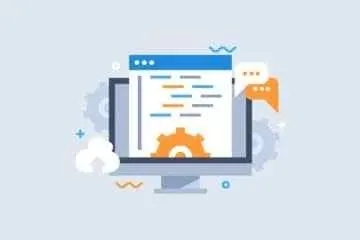



 Tech & IT
Tech & IT
 Business
Business
 Coding & Developer
Coding & Developer
 Finance & Accounting
Finance & Accounting
 Academics
Academics
 Office Applications
Office Applications
 Art & Design
Art & Design
 Marketing
Marketing
 Health & Wellness
Health & Wellness
 Sounds & Music
Sounds & Music
 Lifestyle
Lifestyle
 Photography
Photography
More Learnfly
Business Solution Become an Instructor
Data science is one of todays top careers. Get the training you need to get ahead—or stay on top—in fields such as data analysis, mining, visualization, and big data, using tools like Excel, R, Hadoop, and Python.

By : Satyendra singh
Basics of machine learning,Linear Regression,Logistic Regression, Naïve Bayes ,KNN a...
4 1550
6:1:56 hrs 19 lectures Expert Level

By : Sekhar Metla (Microsoft Certified Professional) Sudha
Using MySQL Server RDBMS with Workbench to Become a SQL Expert on Queries for your Bu...
4 941
5:16:58 hrs 87 lectures All Level

By : John Hedengren
Data science introduction for scientists and engineers...
4.1 568972
1:12:54 hrs 17 lectures All Level

By : Arbaz Khan
Home Automation Using J.A.R.V.I.S AI Assistant With Arduino UNO Board...
4.3 8902
1:1:54 hrs 16 lectures Beginner Level

By : Juan Galvan
Become a professional Data Scientist and learn how to use NumPy, Pandas, Machine Lear...
4.7 7728
14:21:2 hrs 140 lectures All Level

By : Abdulhadi Darwish
Become an NLP Engineer by creating real projects using Python, semantic search, text ...
4.7 72190
2:38:12 hrs 71 lectures Beginner Level

By : Prince Patni
Answers with Detail Explanation to Actual Spotfire Interview Questions, beneficial fo...
4.2 92331
25 lectures All Level

By : Pruthviraja L
A Practical Approach To Learn Pandas From Basic To Advanced Level With 100 + Exercise...
4.8 46090
15:44:16 hrs 103 lectures All Level

By : Phikolomzi Gugwana
Histograms, Box Plot and Descriptive Statistics in R...
4.8 73348
31 lectures Intermedite Level












Learn more topics in various categories at one place. Explore unlimited courses in other categories and up-skill yourself today.

 Jazeb Akram
Jazeb Akram 4.2 771053 Beginner Level

 John Hedengren
John Hedengren 4.1 568972 All Level

 Ranjan Pandey
Ranjan Pandey 4.1 346660 All Level

 Muhammad Ahsan Pervaiz
Muhammad Ahsan Pervaiz 4.2 101261 All Level

 Pieter Vliegenthart
Pieter Vliegenthart 4.6 100851 All Level

 Jerome P.
Jerome P. 4.8 100773 All Level

 Vikas Munjal
Vikas Munjal 4.8 100007 Beginner Level

 Senol Atac
Senol Atac 4.9 99984 All Level

 Avinash A
Avinash A 4.8 99903 All Level
.jpg)
 AKHIL VYDYULA
AKHIL VYDYULA8 Lectures Intermedite

 Nirmala Raju
Nirmala Raju12 Lectures Intermedite

 Daniel Pham
Daniel Pham13 Lectures Intermedite

 ajmal ali
ajmal ali5 Lectures Intermedite

 Yoann Bierling
Yoann Bierling16 Lectures Intermedite

 Daniel Pham
Daniel Pham273 Lectures Intermedite

 Daniel Pham
Daniel Pham62 Lectures Intermedite

 Daniel Pham
Daniel Pham59 Lectures Intermedite

 Satyendra singh
Satyendra singh19 Lectures Intermedite

 RougeNeuron Academy
RougeNeuron Academy28 Lectures Intermedite

 RougeNeuron Academy
RougeNeuron Academy27 Lectures Intermedite

 Sekhar Metla (Microsoft Certified Professional) Sudha
Sekhar Metla (Microsoft Certified Professional) Sudha87 Lectures Intermedite

 John Hedengren
John Hedengren 17 Lectures Intermedite

 Arbaz Khan
Arbaz Khan16 Lectures Intermedite

 Juan Galvan
Juan Galvan140 Lectures Intermedite

 Abdulhadi Darwish
Abdulhadi Darwish71 Lectures Intermedite

 Prince Patni
Prince Patni25 Lectures Intermedite

 Amit Ranjan
Amit Ranjan14 Lectures Intermedite

 Amit Ranjan
Amit Ranjan31 Lectures Intermedite
.jpg)
 Mukund Kumar Mishra
Mukund Kumar Mishra22 Lectures Intermedite

 Md. A. Barik
Md. A. Barik22 Lectures Intermedite

 Pruthviraja L
Pruthviraja L103 Lectures Intermedite

 Arthur Tkachenko
Arthur Tkachenko29 Lectures Intermedite

 Navdeep Kaur
Navdeep Kaur70 Lectures Intermedite

 Navdeep Kaur
Navdeep Kaur23 Lectures Intermedite

 Navdeep Kaur
Navdeep Kaur47 Lectures Intermedite

 Manoj G T
Manoj G T19 Lectures Intermedite

 Jordan Stanchev
Jordan Stanchev21 Lectures Intermedite

 Saheb Singh chaddha
Saheb Singh chaddha26 Lectures Intermedite

 Phikolomzi Gugwana
Phikolomzi Gugwana31 Lectures Intermedite

 Abhilash Nelson
Abhilash Nelson15 Lectures Intermedite

 Eduardo Morelli
Eduardo Morelli6 Lectures Intermedite
Data Science is a multidisciplinary field that involves extracting insights and knowledge from structured and unstructured data. It combines expertise from statistics, mathematics, programming, and domain-specific knowledge to analyze and interpret complex data sets.
The Data Science process typically involves steps like data collection, cleaning, exploratory data analysis, feature engineering, model building, evaluation, and deployment. This iterative process aims to extract valuable insights and predictions from data.
Common programming languages in Data Science include Python and R. They offer extensive libraries and frameworks, such as NumPy, pandas, scikit-learn (Python), and tidyverse (R), supporting various aspects of data manipulation, analysis, and machine learning.
Machine Learning is a subset of Data Science that focuses on creating algorithms and models that enable systems to learn and make predictions or decisions without explicit programming. It involves supervised learning, unsupervised learning, and reinforcement learning.
Data Science plays a crucial role in business decision-making by providing data-driven insights. It helps businesses understand customer behavior, optimize processes, forecast trends, and make informed decisions based on patterns and trends identified in the data.





